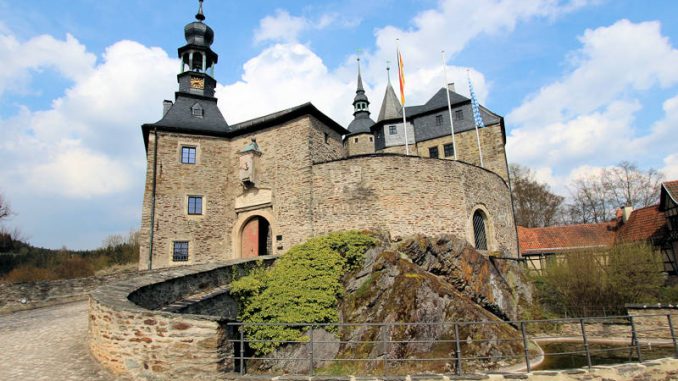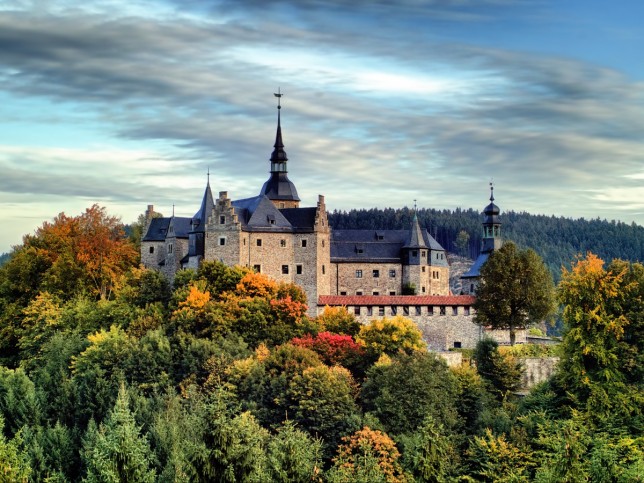Origins and Historical Significance
The exact origins of Lauenstein Castle are somewhat shrouded in mystery, but the earliest documented mention dates back to the 12th century. Like many medieval fortresses, it was built for defensive purposes, controlling the strategic routes between Bavaria and Thuringia. Over the centuries, the castle witnessed numerous changes in ownership, as noble families and influential figures took control of the estate. One of the prominent families that owned the castle was the von Thüna family, which held it for several centuries.
During the medieval period, Lauenstein Castle served not only as a residence for the nobility but also as a symbol of power and authority. It became a center of local governance, with its lords overseeing the surrounding lands. Its location, perched atop a rocky hill, provided a strong defensive position, with sweeping views of the forested landscape below.

Architectural Evolution
Lauenstein Castle’s architectural evolution is a testament to its long history. Originally built as a medieval fortress, the castle underwent significant renovations during the Renaissance, resulting in a harmonious blend of styles.
The oldest parts of the castle, including the keep and parts of the outer walls, retain the rugged, functional design typical of medieval fortresses. These areas are characterized by thick stone walls, narrow windows, and defensive features such as battlements and arrow slits.
In the 16th century, under the ownership of the von Thüna family, the castle was expanded and renovated in the Renaissance style. This transformation added a touch of elegance to the otherwise austere structure. The Renaissance wing of the castle features more ornate architectural details, including larger windows, decorative gables, and finely crafted interiors. The blend of medieval and Renaissance styles gives Lauenstein Castle a unique charm, making it stand out among other castles in the region.

A Castle of Legends and Folklore
Like many medieval castles, Lauenstein is steeped in legends and folklore. One of the most famous tales associated with the castle is that of the “White Lady,” a ghost said to haunt its halls. According to the legend, the ghost is the spirit of a noblewoman who met a tragic fate within the castle’s walls. Her apparition is said to appear at night, wandering through the castle in search of peace. This ghostly tale adds to the castle’s allure, attracting curious visitors and paranormal enthusiasts.

The Castle Today
Today, Lauenstein Castle is open to the public and serves as both a historical monument and a museum. Visitors can explore its well-preserved rooms, including the grand hall, chapel, and the castle’s various towers. The museum offers exhibits on the castle’s history, the region’s culture, and its former residents.
The castle grounds are equally impressive, with beautifully landscaped gardens that provide a peaceful contrast to the imposing stone walls. From the castle’s elevated position, visitors can enjoy panoramic views of the Franconian Forest, a stunning natural backdrop that changes with the seasons.
In addition to its historical and architectural significance, Lauenstein Castle hosts various cultural events throughout the year, including medieval fairs, concerts, and reenactments. These events bring the castle to life, allowing visitors to experience the atmosphere of a bygone era.

Conclusion
Lauenstein Castle is more than just a historical structure; it is a testament to the region’s rich history and cultural heritage. With its captivating blend of medieval and Renaissance architecture, intriguing legends, and breathtaking views, the castle offers visitors an unforgettable journey into the past. Whether you’re a history enthusiast, an architecture lover, or simply looking for a scenic day trip, Lauenstein Castle is a must-visit destination in Bavaria.

